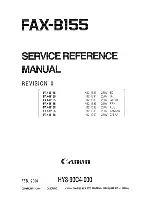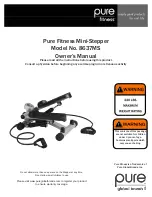
ABOUT THE NEEDLE AND FABRIC
G
ettin
g R
ea
d
y
Basic operations
B-49
B
1
About the Needle
The sewing machine needle is probably the most important part of the sewing machine. Choosing the
proper needle for your sewing project will result in a beautiful finish and fewer problems. Below are some
things to keep in mind about needles.
• The smaller the needle number, the finer the needle. As the numbers increase, the needles get thicker.
• Use fine needles with lightweight fabrics, and thicker needles with heavyweight fabrics.
• To avoid skipped stitches, use ball point needle (golden colored) 90/14 with stretch fabrics.
• To avoid skipped stitches, use ball point needle (golden colored) 90/14 when sewing character or decorative
stitches.
Fabric/Thread/Needle Combinations
The following table provides information concerning the appropriate thread and needle for various
fabrics. Please refer to this table when selecting a thread and needle for the fabric you wish to use.
ABOUT THE NEEDLE AND FABRIC
Fabric type/Application
Thread
Size of needle
Type
Size
Medium weight fabrics
Broadcloth
Cotton thread
60 - 90
75/11 - 90/14
Taffeta
Synthetic thread
Flannel, Gabardine Silk thread
50
Thin fabrics
Lawn
Cotton thread
60 - 90
65/9 - 75/11
Georgette
Synthetic thread
Challis, Satin
Silk thread
50
Thick fabrics
Denim
Cotton thread
30
90/14 - 100/16
50
Corduroy
Synthetic thread
50 - 60
Tweed
Silk thread
Stretch fabrics
Jersey
Thread for knits
50 - 60
Ball point needle
(gold colored)
75/11 - 90/14
Tricot
Easily frayed fabrics
Cotton thread
50 - 90
65/9 - 90/14
Synthetic thread
Silk thread
50
For top-stitching
Synthetic thread
Silk thread
30
100/16
50 - 60
90/14 - 100/16
Note
• Never use a thread of weight 20 or lower. It may cause malfunctions.
Memo
• For transparent monofilament nylon thread, always use needle sizes 90/14 or 100/16.
The same thread is usually used for the bobbin thread and upper thread.
CAUTION
• Be sure to follow the needle, thread, and fabric combinations listed in the table. Using an improper
combination, especially a heavyweight fabric (i.e., denim) with a small needle (i.e., 65/9 - 75/11), may
cause the needle to bend or break, and lead to injury. Also, the seam may be uneven, the fabric may
pucker, or the machine may skip stitches.
Summary of Contents for Aria BLAR
Page 1: ......
Page 75: ...USEFUL FUNCTIONS Sewing Basics Sewing S 19 S 1...
Page 159: ...USING THE MEMORY FUNCTION Character Decorative Stitches Sewing S 103 S 3...
Page 172: ...TROUBLESHOOTING S 116...
Page 196: ...INDEX A 24 W Walking foot B 45 Z Zigzag stitches S 31 Zipper insertion centered S 64 side S 65...
Page 197: ......
Page 198: ......
Page 199: ......
Page 200: ...English 882 D11 Printed in Taiwan XF6507 001...
















































